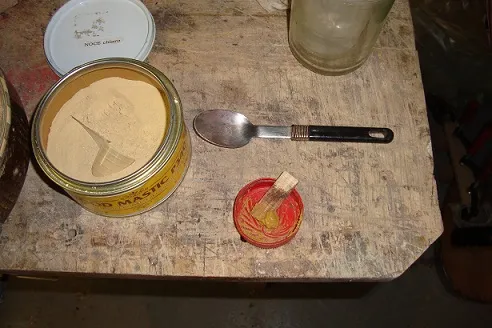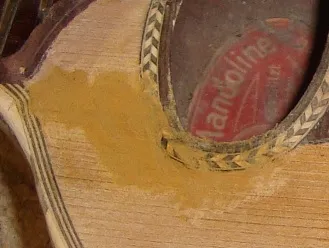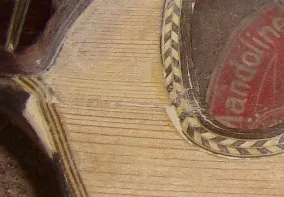|
Large Holes In this section, I am defining a hole as a perforation in the top, but which does not have significant length like a crack. As such, it usually has a different cause..... sadly instrument abuse. The approach to repairing large holes is a little more complex and difficult than that for small holes and cracks. Essentially you need to cut around the hole to get good, clean edges, to which you can glue a replacement piece. |
|||
|
|
Here is the problem... a thin piece of wood stuck over the hole, and the associated crack filled with glue/wax or similar. |
|
The hole shows evidence of being cut back previously, I can't imagine it was made that shape, but the repair was very much a mess. |
|
|
The first job is was to remove the patch, and clean out the old glue and wax... visible here is also the sloped edges top and bottom, which will give a much bigger gluing surface. |
|
Before anything else however, it was necessary to fill the associated crack with a sliver of wood... preferable to taking out more topwood. |
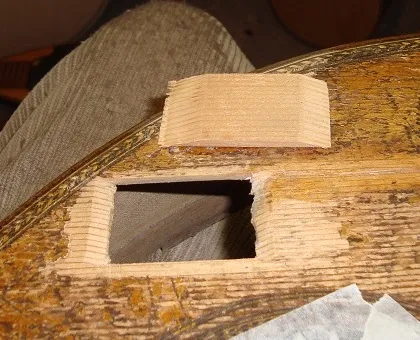
|
This is the piece i have prepared to fill the hole, very carefully measured, a little large, and then carefully sanded each side to fit. The two ends are filed down to match the sloping ends of the hole... |

|
This is the fit before gluing, as far as possible, I selected a piece of wood with similar grain spacing, though it is impossible to get to match completely, and I have the advantage of a good selection of wood to choose from. |
| once the top is sanded, its possible to identify any small cracks that need treating as | |||
|
|
|
||
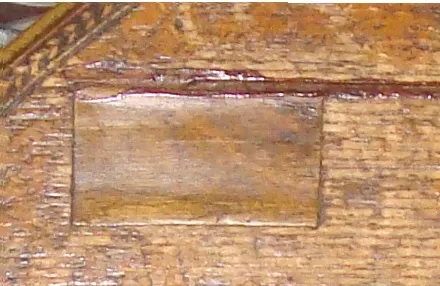

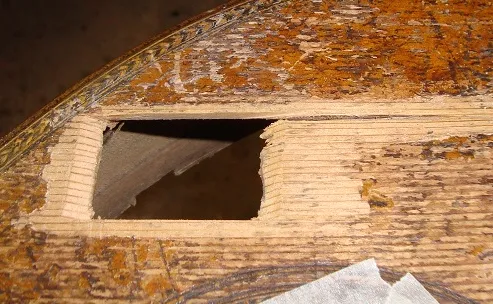
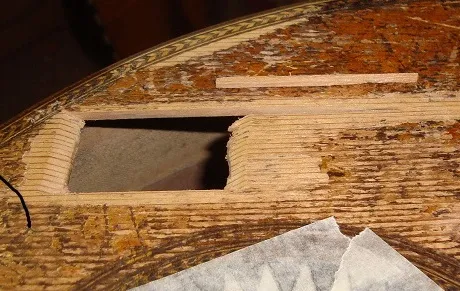
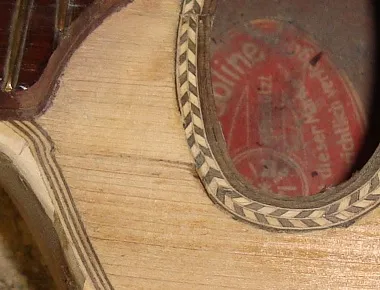
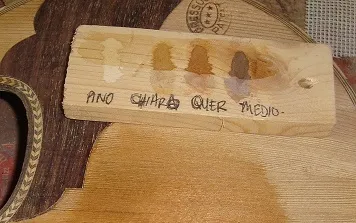 O
O

